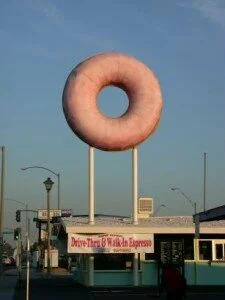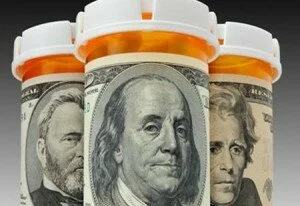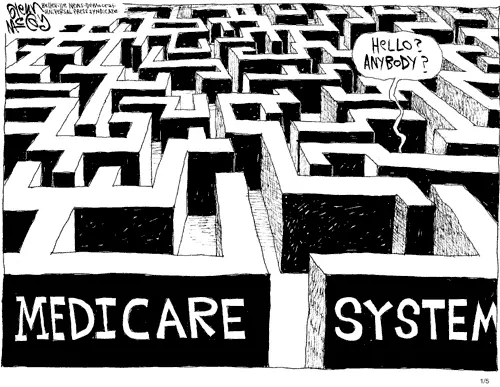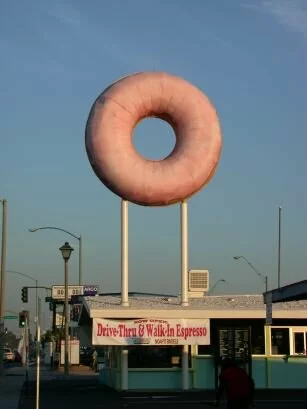Prescription medication bills can be crushing, especially without good insurance coverage. However, there is a best kept secret. Wondering How to Get Free Prescription Drugs or Low-Cost Prescription Medication? Believe it or not, it can be done. With a little savvy and research, you can actually prescriptions that cost you little or nothing.
With a strained economy, everyone is watching their budgets today. Whether you have first rate insurance, or no insurance at all, take advantage of the opportunities that are there for the taking when it comes to getting free or low-cost prescription drugs.
The first thing you need to realize is that it may take you some time to have access to savings. However, you have nothing to lose as you apply for programs that will allow you to purchase your prescriptions at a lower price, at times even qualifying for free medication.
The RX Assist Patient Assistance Program Center provides an excellent resource that is free for an online search. You’ll be able to find out what is offered for individuals with a low income. You can find out eligibility requirements, special programs offered for those with numerous prescriptions, and also learn about programs that are provided by the state. Finding out how to get the lowest price or even free medication can be very time-consuming and isn’t always easy. You still owe it to yourself to find out if you qualify. Above all, you need to ensure that you do not jeopardize your health by going without essential medication.
Clinical trials are another way to go when you are searching for medication at little or no cost. Clinicaltrials.gov can assist you in finding out if there is anything available in your area that applies to your condition. You’ll be under the superivision of hospital staff while you participate. Not only will you have access to medication for free, you will also be taking part in important research that could help others.
Don’t forget Medicare. This program is funded by the federal government and administered by each state. If you are over the age of 65, you need to inquire about Medicare. Find out all of the details and how this valuable program can assist you in all of your healthcare needs. From medication to doctor’s visits and hospital stays, you could be eligible for considerable assistance.
Another resourceful way on how to get low-cost prescription drugs is eDrugsearch.com can also help you in finding affordable medication. You’ll be able to freely compare drug prices from various, licensed Canadian pharmacies. Whether you need a generic prescription, or the name brand, this site is a gold mine of free valuable information. You’ll have access to verified online pharmacy and drug ratings and reviews. Combine your findings at eDrugsearch.com with any assistance programs you find to save the most on a tight budget.
About this Angie’s List Expert: Cary Byrd is the president and founder of eDrugSearch.com. Based in San Antonio, eDrugSearch.com is a free cost comparison engine that helps consumers get safe access to affordable medications and advocates licensed online pharmacies as a widely accepted alternative.

I’ve guess I’ve finally come back to my senses.
After years of being cynical about our political system’s capability of doing anything but accumulating debt, I somehow thought Obama could make a difference. I thought, among other things, that meaningful healthcare reform was finally on its way.
But the system itself is more powerful than Obama … far more powerful.
I didn’t think it was possible that Congress could create a healthcare reform bill that I would oppose. I figured that any change would be a step in the right direction.
But then the White House caved in to Big Pharma on issues like Medicare price negotiations and Canadian drug reimportation. Big Pharma was basically assured that it could continue to charge monopoly prices for brand-name drugs without restraint.
That completely knocks out the promise of controlling skyrocketing prescription drug costs — which should have been a key pillar of healthcare reform.
Obama did this, clearly, as a political calculation. He did not think he could get a bill passed if he had both Big Pharma and Big Insurance against him. So he picked his poison — and Big Pharma agreed to support reform.
As a result, “healthcare reform” has become “health insurance reform.” The health insurance industry, like Big Pharma, is not a sterling example of the free market economy at work. That’s why you don’t see real price competition, and why health insurance companies focus instead on increasing their margins by not paying off claims. It’s also why a public option is necessary for there to be any chance of real insurance reform.
I don’t think Obama’s going to get the public option, either.
I think we’re going to get a bill passed that encourages/forces Americans to sign up for private insurance, and that continues to subsidize drug company profits. It will end up enriching both Big Pharma and Big Insurance. And it will cost us billions or trillions of dollars that we don’t have and must borrow from China.
Borrow and spend. That’s been the core “problem-solving” approach of both Democrats and Republicans over the past 30 years (with the exception of Bill Clinton, the only president to have balanced the budget during this period.) In fact, Obama’s “problem-solving” approach on healthcare is eerily similar to George Bush’s approach on Medicare Part D.
As former Secretary of Labor Robert Reich explains:
The White House confirmed it has promised Big Pharma that any healthcare legislation will bar the government from using its huge purchasing power to negotiate lower drug prices. That’s basically the same deal George W. Bush struck in getting the Medicare drug benefit, and it’s proven a bonanza for the drug industry. A continuation will be an even larger bonanza, given all the Boomers who will be enrolling in Medicare over the next decade. And it will be a gold mine if the deal extends to Medicaid, which will be expanded under most versions of the healthcare bills now emerging from Congress, and to any public option that might be included. (We don’t know how far the deal extends beyond Medicare because its details haven’t been made public.)
Let me remind you: Any bonanza for the drug industry means higher health-care costs for the rest of us, which is one reason why critics of the emerging healthcare plans, including the Congressional Budget Office, are so worried about their failure to adequately stem future healthcare costs. To be sure, as part of its deal with the White House, Big Pharma apparently has promised to cut future drug costs by $80 billion. But neither the industry nor the White House nor any congressional committee has announced exactly where the $80 billion in savings will show up nor how this portion of the deal will be enforced. In any event, you can bet that the bonanza Big Pharma will reap far exceeds $80 billion. Otherwise, why would it have agreed?
Exactly.
Isn’t it odd, in a day when the political parties are supposedly so different, and people are shouting about non-existent “death panels” at town hall meetings, that the underlying reality is that the political parties are actually so similar? That the Democrats’ “solution” for healthcare may simply be an expanded version of the Republicans’ “solution” for seniors who can’t afford their prescription drugs — Medicare Part D?
Democrats and Republicans enjoy the perks of power. But they ultimately don’t run Washington. They both must answer to the same “paymasters,” as consumer advocate Ralph Nader calls them. Corporate interests.
Show me a grassroots movement that takes on corporate power, and I’ll show you a third political party. You won’t find it within the current two-party system. When we next “water the tree of liberty with the blood of tyrants,” as Jefferson put it, those tyrants will be giant multinational corporations, not their trembling lackeys who hold political office.
Image source
 You are probably aware by now of Medicare Part D, which provides a prescription drug benefit to seniors. But did you know that you also may be able to qualify for extra help from Social Security?
You are probably aware by now of Medicare Part D, which provides a prescription drug benefit to seniors. But did you know that you also may be able to qualify for extra help from Social Security?
If you are covered by Medicare but have limited income and resources, Social Security may step up to pay part of your monthly premiums, annual deductibles and prescription co-payments. The extra help is worth an average of $3,900 per year.
You can qualify for extra help if you have income limited to $16,245 for an individual or $21, 855 for a married couple living together.
Even if your annual income is higher, however, you still may be able to get some help depending on your specific circumstances. These include:
- Supporting other family members who live with you;
- Having earnings from work;
- Living in Alaska or Hawaii; and/or
- Having resources limited to $12,510 for an individual or $25,010 for a married couple living together. Resources include such things as bank accounts, stocks and bonds.
Social Security has an online application for those interested. You can also call Social Security at 1-800-772-1213 and ask for the Application for Help with Medicare Prescription Drug Plan Costs, or go to the nearest Social Security office.
To learn more about the Medicare prescription drug plans and special enrollment periods, visit www.medicare.gov or call 1-800-MEDICARE.

You probably didn’t know it, but May is officially Older Americans Month. Since many members of the eDrugSearch.com community are seniors, and we are keenly aware of their struggles in managing their prescription drug costs, we thought we would take this opportunity to share some facts about the older population that might surprise you, courtesy of the Department of Health and Human Services Administration on Aging –
- The older population — persons 65 years or older — represents about 12.4 percent of the U.S. population, about one in every eight Americans.
- By 2030, there will be about 71.5 million older persons, more than twice their number in 2000, representing about 20 percent of the U.S. population.
- In 2006 older consumers averaged out-of-pocket health care expenditures of $4,631, an increase of 62 percent since 1996. In contrast, the total population spent considerably less, averaging $2,853 in out-of-pocket costs.
- Older Americans spent 12.7 percent of their total expenditures on health, more than twice the proportion spent by all consumers (5.7 percent).
- Health costs incurred on average by older consumers in 2006 (the latest year for which data is available) consisted of $2,770 (60 percent) for insurance, $859 (18 percent) for drugs, $844 (18.5 percent) for medical services, and $159 (3 percent) for medical supplies.
Unfortunately, our seniors too often bear the brunt of our overpriced healthcare system. While the issue of skyrocketing drug costs for seniors has received less media attention since Medicare Part D was introduced in 2006, the truth is that this costly new entitlement program has helped insurance companies and pharmaceutical companies far more than it has helped individual seniors (as Suddenly Senior explains).
What’s more, many seniors are unaware that they may qualify for additional financial assistance with their prescription drugs and other medical bills.
To commemorate Older Americans Month, we encourage you to tell a senior you love (and that can include yourself!) about BenefitsCheckUp, a service of the National Council on Aging that helps match seniors with benefits programs. BenefitsCheckUp has helped more than 2.2 million people find over $7.2 billion worth of annual benefits.
Take your BenefitsCheckUp here.
Image source
I found this wonderful letter by Carrol L. Fry in the Kansas City Star and wanted to share it with all of you. It’s in response to a syndicated column by a typically out-of-touch Washington pundit.
I read George Will’s hand-wringing column about the imminent demise of Medicare (2/7, Opinion, “Obama willing, Congress weak on entitlements”). Maybe if our government were willing to curb corporate welfare for the prescription drug companies, we could save a few billion.
I was shocked to find that my Medicare Plan D cost for one of my prescriptions, for both my co-pay and Medicare, was $392 for a 90-day supply, and another was $265 for 90 days. I checked prices at a Canadian pharmacy and found their price was $110 for the former and $200 for the latter for the same product.
I have heard all the special pleading from pharmaceutical companies about the cost of research being high. But does this mean that the U.S. is footing the bill for it while other countries regulate prices? Maybe, but I think we have a case of what Will euphemizes as “political free speechâ€â€” i.e. bribery of Congress.
Drug companies enjoy a monopoly on patented prescription drugs. We should regulate their prices.
Honestly, I am so tired of these rich Washington pundits trying to tell the American people what’s good for them. You know what would be good? Being able to afford the medications we need to live our lives with dignity.
And no — I’m not asking for a government handout, just as Carrol isn’t asking for a handout. We’re willing to pay for the medications we need.
All we’re asking is for the government not to stack the deck against us — not to continue making American consumers pay more for their drugs than the citizens of every other country in the developed world.
Not to let big drug companies control the FDA (the fox guarding the henhouse).
Not to let big drug companies have seemingly unending government-issued monopolies on the products they make.
Not to let them abuse these monopolies by raising prices to outrageous levels.
Is that too much to ask? I know for a fact that it isn’t.
 We’ve written here frequently about the “doughnut hole” in Medicare Part D. This is a coverage gap that, in 2009, requires seniors to begin paying full price for their prescription drugs if they exceed $2,700 in total drug costs.
We’ve written here frequently about the “doughnut hole” in Medicare Part D. This is a coverage gap that, in 2009, requires seniors to begin paying full price for their prescription drugs if they exceed $2,700 in total drug costs.
Contrary to what many seniors believe, the $2,700 isn’t based on out-of-pocket expenditures, but the total cost of their drugs, including the covered portion. So a senior will typically pay less than $1,000 out of pocket before hitting the coverage gap.
And here’s where the doughnut hole becomes a chasm. Coverage doesn’t kick in again until the senior has paid a whopping $4,350 out of pocket.
About a quarter of Medicare Part D enrollees — more than six million seniors — fell into the doughnut hole in 2008.
Now a new study says that many Medicare recipients are choosing not to take their prescription medications once they hit the gap. According to researchers at the University of Pittsburgh Graduate School of Public Health, seniors reduced their monthly prescription drug purchases by 14 percent when their coverage went away.
Doctors fear that patients with chronic conditions such as diabetes and hypertension are putting their health at risk by not taking needed medications.
Clearly, something needs to be done. Unfortunately, the Medicare Part D plan is so expensive — because the legislation that created it was basically drafted by the pharmaceutical industry — that simply throwing more money at the program is not the best solution. What needs to be done first is to pass legislation allowing Medicare to negotiate drug prices with Big Pharma (just as the Veterans Administration does). That would reduce the government’s costs sufficiently to close the coverage gap altogether.
You can read a helpful primer on the doughnut hole, featuring 2009 numbers, here.
With the annual election period for the Medicare prescription drug program beginning Nov. 15, elder-care expert Esther Koch says many seniors are currently in the wrong plan and are wasting money as a result. To get in the right plan for 2009, seniors are advised to use the Drug Plan Finder at www.MEDICARE.gov.
Explains Koch:
When it comes to prescription drug coverage seniors fall into 4 groups: seniors with employee or retiree drug coverage; those in Medicare Advantage Plans with drug coverage; those in low income subsidy programs; and seniors who are in stand-alone Medicare Prescription Drug Plans or have no prescription drug coverage. It’s that last group that needs to act…
Koch offers the following three recommendations for this group of seniors:
1. SENIORS MUST REVIEW THEIR DRUG PLANS EVERY YEAR
Why? Because even if their medications haven’t changed it’s almost certain that their plan’s formulary of drugs covered and pricing have. Medicare contracts with a variety of insurance companies to cover drug costs. What few seniors or caregivers know is that these insurance companies submit new plans to Medicare each year … Last year’s plan is not this year’s plan and that means that it’s unlikely that the best plan for you last year is still the best plan for you this year…
2. A HIGHER PREMIUM PLAN DOESN’T MEAN MORE OR BETTER COVERAGE
It seems logical that choosing a drug plan with a higher premium is going to give you more benefits, but when it comes to Medicare Prescription Drug Plans this simply isn’t true. What you need to focus on is total estimated annual cost… This takes into consideration all the variables including the plan’s formulary of drugs; individual drug classifications and pricing; monthly premiums; deductible amount; whether donut hole coverage is provided; and when catastrophic coverage is triggered.
3. WEB-SAVVY BOOMER-AGE KIDS NEED TO BE INVOLVED
If choosing the right plan sounds like it requires sifting through a lot of information, it does. Luckily, the government offers a powerful online tool that makes this process easy to manage. Web-savvy Boomers can help their parents compare stand-alone drug plans by using the Medicare Prescription Drug Care Plan Finder. By entering their parents’ ZIP code, drug names, dosage information, and 30-day supply amounts, Boomers can obtain a prioritized list of drug plan options sorted from the least expensive to the most expensive plan based on total estimated annual cost…
The annual election period for the Medicare drug program runs from Nov. 15 to Dec. 31.
Image source
BusinessWeek published a story this week on “Medicare’s Costly Doughnut Hole,” which mostly rehashes a survey from the Kaiser Family Foundation (reported here previously) that shows many seniors forgo needed medications rather than pay full price for their meds.
The story also reports that the doughnut hole is getting bigger…
The doughnut hole is exacerbating a growing Medicare financial burden on seniors. On Sept. 26, health-care advisory firm Avalere Health released a report predicting Part D beneficiaries will see their premiums rise 24% on average, to $37 a month, in 2009. Those who joined the 10 most popular plans will swallow a 30% increase … Some drug companies offer assistance programs, Fletcher says, but only for the lowest-income seniors, and only for those willing to endure a tough application process. Those who watch Part D carefully worry that some patients may be cutting back on their drug intake altogether to avoid the doughnut hole, even if they’re endangering their health by doing so.
…and that Obama or McCain may have a chance, if not to fill the hole, then to at least reduce its size for some or all Medicare recipients:
Health policy experts believe that the next Administration will be under pressure to address the doughnut hole, and both candidates have expressed some support for reforming the program. Senator Barack Obama (D-Ill.) endorses the idea of letting the government negotiate drug prices for Part D (it doesn’t have the right to do so now). Senator John McCain (R-Ariz.) has said that higher-income beneficiaries should pay higher premiums for their Part D plans.
Both ideas—dropping drug prices and shifting more of the up-front premiums to members who can afford to pay—have been bandied about in Washington as potential ways of at least shrinking the doughnut hole without the government having to pony up more to support Part D. The prospect of a $700 billion bailout of the financial industry is certainly taking attention away from health-care reform, but there is little doubt the next President will place the doughnut hole high on his agenda.
Image source
From the Sarasota Herald-Tribune:
In health care circles, Monday is Doughnut Hole Day, the deceptively storybook name for a nasty plot turn in the drama of getting prescriptions filled when you’re over 65 and living close to the bone. The hole is the gap in coverage built into Medicare’s Part D prescription drug program, which pays most of the first $2,250 in patient prescriptions and 95 percent of drug expenses over $5,850.
Doughnut Hole Day is the point on the calendar at which large numbers of people with chronic illness begin to exceed $2,250 in drug costs, leaving them to pay full price for their prescriptions until they have spent $3,600 out of pocket.
An August Kaiser study showed that one in four seniors fall into the doughnut hole each year, and that many stop taking needed medications as a result.
What, if anything, do the presidential candidates plan to do about the Medicare doughnut hole?
Here’s one analyst’s take on John McCain’s position:
McCain was absent on the vote to repeal the Bush administration ban on government use of its bulk purchasing power to negotiate lower prices from drug companies for Medicare recipients. He’s been silent on the doughnut hole, under which seniors must pay 100 percent of the next $3,000 in drug costs after Medicare pays 75 percent of cost for the first $2,700, and mum on insurance industry price gouging in the Medicare Advantage program in which payments to private plans average 113% of the cost of care for comparable seniors in regular Medicare.
Obama, meanwhile, has stated that he would close the doughnut hole if elected.
Of course, with the economy a mess and the federal government spending upwards of a trillion dollars to bail out the financial services industry, an Obama administration would have a hard time mustering support for new government spending to help out seniors.
So Doughnut Hole Day is probably here to stay for a while — and, in fact, is predicted to begin coming earlier in the year, as the Medicare coverage gap is expected to increase without federal intervention.
The Dallas Morning News has a worthwhile story on “doughnut hole season” here.
Image source
Jacob Goldstein at the Wall Street Journal Health Blog reported Friday:
It was dueling reports yesterday on Capitol Hill, as Democrats argued that Medicare is paying way too much for prescription drugs and Republicans countered that the spending is on target.
Henry Waxman, chairman of the House oversight committee and a longtime critic of the Medicare Part D drug benefit, … released [a] report, which looked at drug costs for so-called “dual eligible†patients whose drug coverage was switched from Medicaid to Medicare in 2006. The report found that Medicare Part D pays 30% more for drugs than Medicaid, a discrepancy worth more than $3.7 billion for drugmakers in ‘06 and ‘07.
Not to be outdone, the Republicans on the committee come back with their own report, arguing that the comparison isn’t a meaningful one. “Of course a statutory mandate that the Medicaid program pay below-market prices produces below-market acquisition costs for that particular government program,†they point out.
The immediate issue the reports raise is whether Medicare should be allowed to negotiate for lower drug prices. They currently can’t, and Republicans (John McCain excepted) want to keep it that way.
What’s amusing — actually, infuriating, but we like to channel our anger into amusement to reduce our chances of an early ulcer — is how opponents of negotiation try to position the issue as the government trying to pay “below-market” prices. As if the big pharmaceutical companies are operating in a free, open, competitive marketplace, where “market prices” are fair and — basically — what prices “ought” to be.
What hooey! It’s such hooey that I’m even annoyed — check that, amused — that Jacob Goldstein used the term “pointed out” to describe the Republicans’ argument. Rather than a more accurate descriptor, such as “blathered,” “BSed” or “said smiling as a Big Pharma lobbyist handed them another suitcase full of cash.”
Let’s get this clear once and for all. WE DO NOT HAVE A FREE MARKET FOR PRESCRIPTION DRUGS IN THIS COUNTRY. There’s no such thing as “market prices,” or by extension, “below-market prices.” We have, instead, the artificially inflated, unfairly protected prices that Congress and the FDA allow big pharmaceutical companies to charge.
The feds enforce this ridiculously unfair pricing system by:
1. Awarding and extending patents for drugs that do not merit patents — thus giving pharmaceutical companies monopolies that allow them to charge whatever they want.
2. Forbidding competition from outside the U.S. — supposedly on safety grounds, when the reality is that many “U.S.” drugs are made in China or who knows where.
3. Doing basically whatever else the Big Pharma cabal tells them to do.
It pays well, after all.
-
Search Blog Posts
-
-
Trending Content
-

-
Blogroll
- Bullet Wisdom
- Christian Social Network
- DrugWonks.com
- Eye on FDA
- GoozNews
- Health 2.0
- In the Pipeline
- Jesus Christ Our King
- Kevin, M.D.
- Pharm Aid
- Pharma Marketing
- PharmaGossip
- Pharmalot
- San Antonio Asphalt
- San Antonio Life Insurance
- San Antonio Pressure Washing
- The Angry Pharmacist
- The Health Care Blog
- The Peter Rost Blog
- World Vision
-
Tags
big pharma Canadian drugs canadian pharmacies canadian pharmacy consumer reports craig newmark divine healing Drug costs drug prices Drug reimportation eDrugSearch.com FDA Fosamax Generic drugs healing scriptures Health 2.0 healthcare reform Hypertension Jehova Rophe Jesus Christ Lipitor Metformin miracles nabp online pharmacy dictionary online prescriptions osteoporosis peter rost Pharmacies pharmacists pharmacychecker pharmacy spam phrma Prescription drugs prescription medication Proverbs 3:5-8 reimportation relenza Roche saving money SSRI swine flu Tamiflu The Great Physician The Lord our Healer -
Archives
- June 2013
- May 2013
- April 2013
- March 2013
- February 2013
- January 2013
- August 2012
- July 2012
- June 2012
- April 2012
- March 2012
- February 2012
- January 2012
- November 2011
- June 2011
- August 2010
- July 2010
- June 2010
- May 2010
- April 2010
- March 2010
- February 2010
- January 2010
- November 2009
- October 2009
- September 2009
- August 2009
- July 2009
- June 2009
- May 2009
- April 2009
- March 2009
- February 2009
- January 2009
- December 2008
- November 2008
- October 2008
- September 2008
- August 2008
- July 2008
- June 2008
- May 2008
- April 2008
- March 2008
- February 2008
- January 2008
- December 2007
- November 2007
- October 2007
- September 2007
- August 2007
- July 2007
- June 2007
- May 2007
- April 2007
- March 2007
- February 2007
- January 2007
- December 2006
- November 2006
-
Recent Comments
- Ranee on What is the Difference Between Effexor and Cymbalta?
- bAnn805 on Crestor, Lipitor, or Zocor – Which statin is right for you?
- Anna Pham on Why is Medicine Cheaper in Canada?
- Anna Pham on How to Get the Cheapest Prescription Medications
- Anna Pham on How to Travel With Prescription Medication




